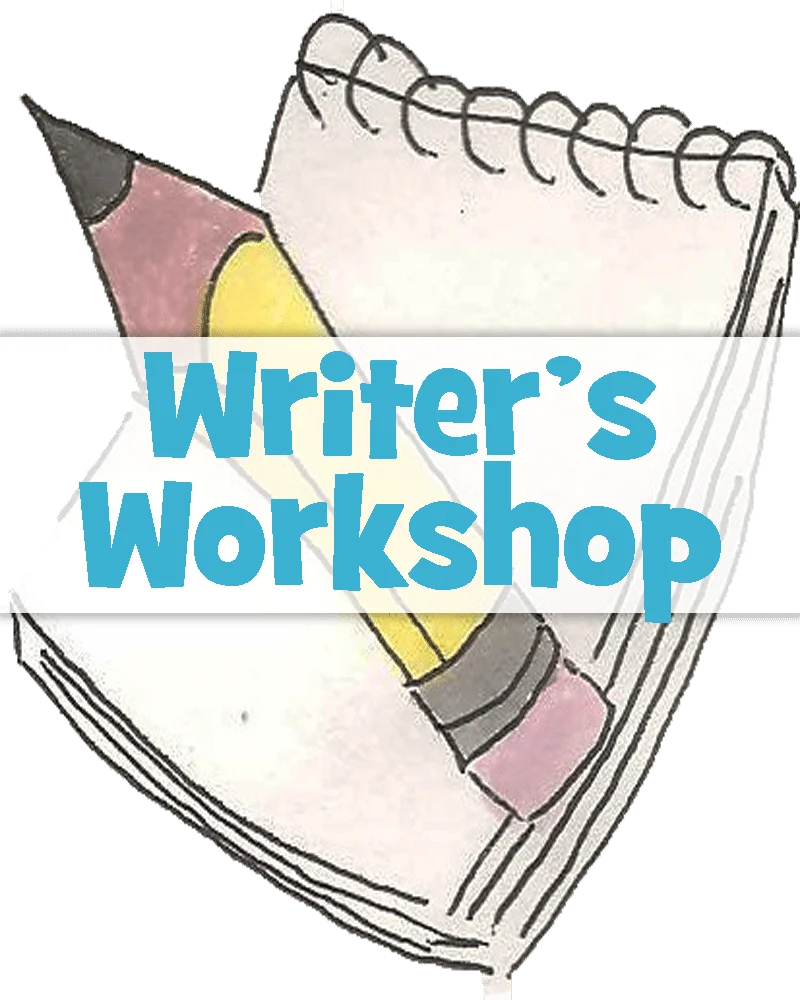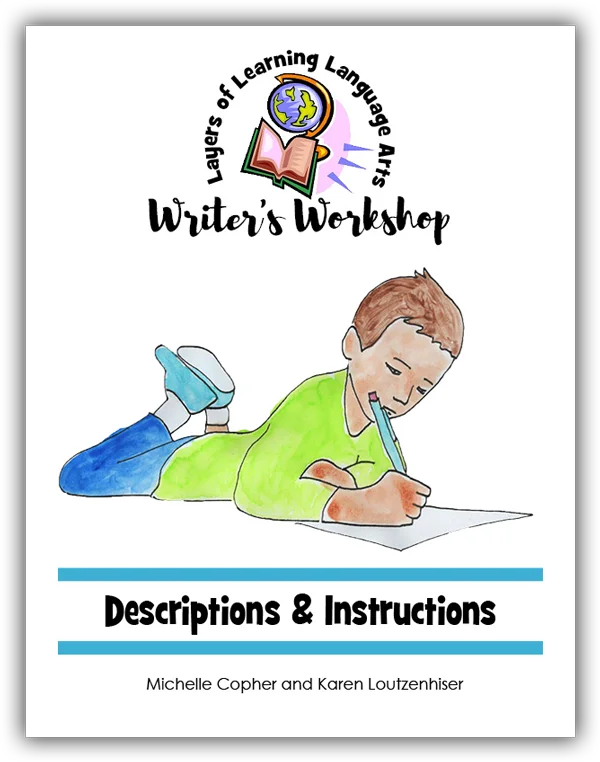Writer’s Workshop is a writing program your whole family, from emergent writers right up to Mom and Dad. Your family can explore the world of writing together. This is a sample exercise about writing instructions. Try it with all of your kids.
This Writer’s Workshop exercise is from Writer’s Workshop Descriptions and Instructions. In Descriptions and Instructions, you’ll learn how to use vivid language and precise word choice. You’ll play with words, learn literary devices, and create varied and interesting descriptions and precise instructions. You’ll begin to think of writing as an art form and you as the artist who crafts the words. Your whole family will work together and help each other become stronger writers. Join us for a family-style writing program in Writer’s Workshop.
Writing instructions involves precise language. Your aim is to enable your readers to be able to duplicate the process you are describing. Word choice will be of particular importance as we write instructions and practice choosing precise language.
Step 1 Mini-Lesson
Start each Writer’s Workshop lesson off with a 5-10 minute mini-lesson with all of your kids. The sidebars of each Writer’s Workshop unit are lined with mini-lesson ideas to choose from. For this lesson, you could discuss action verbs and their role in written instructions.
Action verbs are key when you’re writing procedures and instructions. You will use words like cut, mix, glue, nail, stir, pour, sift, or combine. Recipes are one kind of a written set of instructions that uses precise action verbs. For example, grilling chicken is different than sauteing it. The verb matters, so choose your verbs carefully when writing procedures and instructions. Talk about how a recipe could go awry if your recipe had the wrong verbs.
Step 2 Exercise: Writing A Recipe
Spend most of your Writer’s Workshop time on the exercise, which can last as long or as short as you need it to, day by day. This exercise uses recipes to help you understand how to write instructions.
Much like science experiments, recipes are written very exactly so they can be duplicated by anyone who is trying to make them. Choose a recipe you will cook or bake from scratch. Cookies work well for this exercise, but you can use any recipe you like.
Here’s an example of a recipe for blueberry muffins you can try that kids will love to bake as they learn to write precise instructions:

- 2 cups all-purpose flour
- 3 teaspoons baking powder
- 1/2 teaspoon salt
- 3/4 cups sugar
- 1 egg
- 1 cup milk
- 1/4 cup vegetable oil
- 1 cup blueberries
- Preheat oven to 400 degrees F (205 degrees C).
- Stir together the flour, baking powder, salt, and sugar in a large bowl until they are thoroughly combined. Make a well in the center.
- In a small bowl, beat the egg with a fork. Stir in the milk and oil, combining all three. Pour all at once into the well in the flour mixture. Mix quickly and lightly with a fork until moistened, but do not beat. The batter will be lumpy.
- Add 1 cup fresh blueberries and fold in carefully.
- Pour the batter into paper-lined muffin pan cups.
- Bake for 25 minutes or until golden brown and cooked through.
Write three simple recipes on the “Recipe Cards” printable shown here. You can use recipes your family makes, look online or in a cookbook, or make up your own. Highlight words that use exact language on your recipe cards. Put this in the Journal section of your Writer’s Notebook.
Step 3: Writing Project
Most exercises stay in your Writer’s Notebook to be used a reference, for inspiration, or to be tossed at a later date. But about once a month, one piece of writing should be taken clear through the writing process. This is your writing project for the unit.
As you are working on the writing project for Descriptions and Instructions, you will let your kids choose a bit of writing from the unit that they particularly enjoyed to take through the writing process for their project. If they enjoyed the recipe exercise, you might encourage your kids to create a recipe book with several of your family recipes as well as some they create on their own to show how they’ve mastered using precise language to write instructions their readers can follow.
You can learn details about the writing process and how to guide writers in the Writer’s Workshop Guidebook.
Step 4: Evaluating Writing
Every piece of writing that makes it to publication needs to be shared before an audience and then evaluated. The audience should cheer for the writer and ask curious and positive questions about the writing when appropriate. Evaluations should be designed to help the writer grow, not just to create a grade. Every Writer’s Workshop unit comes with helps for the mentor, including a rubric that is specific to the genre being taught. General writing evaluation criteria and strategies are taught to the parent or mentor in the Writer’s Workshop Guidebook.
What You’ll Find in Every Writer’s Workshop Unit
Printables
You’ll find printables in every Writer’s Workshop unit. They are tools for helping kids learn the writing process, skills, and ways to write in specific genres. They make lessons in a family school setting a little more manageable for parents too.
Ideas Banks
In each unit, kids will be doing a variety of writing exercises as well as one project. They will learn to take their project through the writing process, incorporating what they’ve learned during the exercises. Each unit has a big idea bank for kids to choose from so they can find something personally meaningful in each genre.
Rubrics
Every unit also includes a rubric to help parents or mentors know how to give feedback that will help writers grow. Rubrics are tools writers can use to self-check and mentors can use to know what to look for in each writing genre. We never just slap a grade on writing. Every bit of feedback is a tool to improve and grow.
More Writer’s Workshop

Learn more about Writer’s Workshop and how it can help you create writers (not just grammar workbook filler-outers!). We invite you to check out the Writer’s Workshop Curriculum Guide. Then see how Layers of Learning can change your whole homeschool into a happy, hands-on family school with the Writer’s Workshop Guidebook. We believe learning is about exploring! If you like exploring, you’ll love the rest of the Layers of Learning program too – history, geography, science, and art, all taught with your whole family exploring together.
Get a Free Unit
Choose between the first unit in each Layers of Learning subject to try for free when you sign up for the newsletter.
We never spam and you can cancel your subscription at any time.





I just recently found Layers of Learning and I am extremely interested in utilizing some of the curriculum for my son, especially the Writers Workshop….although he is a very reluctant writer/learner could this be an easily utilized program?
One of the benefits of Layers of Learning is that it is pick-and-choose and really customizable. Writer’s Workshop breaks writing down into high interest activities and prompts that are less overwhelming and helps kids master things bit by bit. It is perfect for reluctant writers because they get to grow in tiny bits from wherever they are without getting overwhelmed and intimidated by writing. A lot of families tell us their reluctant writers have made huge strides and actually began to enjoy writing with this program.